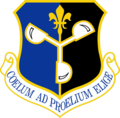Mission
The 17th Operational Weather Squadron is responsible for producing and disseminating mission planning and execution weather analyses, forecasts, and briefings for Air Force, Army, Navy, Marines, Guard, Reserve, USFK, PACOM, PACAF, USARPAC, SOCPAC, and NAVPAC forces operating at 115 installations/sites over 110M square miles, within the Pacific theater of operations.
This weather squadron is responsible for base or post forecasting, developing weather products, briefing transient aircrews, and weather warnings for all of their geographical units. Using automatic observing systems located at all military installations and communicating with their combat weather flights, the squadron is able to 'watch' the weather in their entire area of responsibility from one central location.
The Operational Weather Squadron is likely the first place a newly schooled weather apprentice will report. At the squadron, working alongside a seasoned weather professional, the forecaster is trained in all aspects of Air Force meteorology, from pilot briefing to tactical forecasting.
History
The 17th Operational Weather Squadron was activated as the 17th Weather Squadron on September 18, 1942, at McClellan Field, California.
The squadron shortly thereafter relocated to Auckland, New Zealand, where it was assigned to U.S. Army Forces in the South Pacific Area. In January 1943 the 17th relocated to Noumea, New Caledonia. It was reassigned to Thirteenth Air Force on July 1, 1943, but returned to the control of U.S. Army Forces in the South Pacific Area on December 20, 1943.
The squadron was assigned to Army Air Forces, Pacific Ocean Area on August 1, 1944, but reassigned to the 1st Provisional Weather Group on September 4. In November 1944, the 17th moved to Hickam Field, Hawaii, where it was disbanded on February 10, 1945.
The 17th was again activated on January 15, 1970, at Travis Air Force Base, California, as part of the 7th Weather Wing. It was inactivated on June 30, 1972. The squadron was activated once again on April 1, 1980, at Travis. It was inactivated on September 30, 1991, as part of the divestiture of Air Weather Service. The 17th was redesignated the 17th Operational Weather Squadron on October 12, 2000, and activated on October 27, 2000, at Hickam, where it was assigned to the 502nd Air Operations Group. The 17th began operating alongside the Navy (Joint Typhoon Warning Center Detachment) in March 2010.

The Seventh Air Force (Air Forces Korea) (7 AF) is a Numbered Air Force of the United States Pacific Air Forces (PACAF). It is headquartered at Osan Air Base, South Korea.

The Thirteenth Expeditionary Air Force is a provisional numbered air force of the United States Air Force Pacific Air Forces (PACAF). It is headquartered at Hickam Air Force Base, Joint Base Pearl Harbor–Hickam on the island of Oahu, Hawaii. It has never been stationed in the continental United States.

The 607th Combat Weather Squadron of the U.S. Air Force has overall responsibility for planning, providing, and/or arranging weather support for the United States Army during armistice conditions in Korea. 607 CWS and elements of the US Navy and US Marines support the Republic of Korea Air Force (ROKAF) Weather Wing, Combined Meteorological and Oceanographic (METOC) Officer (CMO) and subordinate squadrons during exercises and contingencies. The 607 CWS commander is also the Joint METOC Officer (JMO) and the senior US METOC officer (SMO) for the Korean Theater of Operations (KTO).

The 17th Attack Squadron is a squadron of the United States Air Force. It is assigned to the 432d Wing, and stationed at Creech Air Force Base in Indian Springs, Nevada. The 17th is equipped with the MQ-9 Reaper.
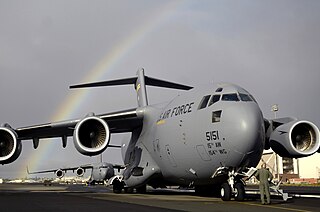
The 15th Wing is a wing of the United States Air Force at Hickam AFB, Joint Base Pearl Harbor–Hickam, Hawaii. The wing reports to 11th Air Force, Headquartered at Joint Base Elmendorf-Richardson, Alaska.

The 42nd Attack Squadron is a United States Air Force unit assigned to the 25th Attack Group located at Creech Air Force Base near Indian Springs, Nevada. It flew the General Atomics MQ-9 Reaper unmanned aerial vehicle. The 42nd oversaw the training and combat deployment of aerial vehicle and sensor operators assigned to the Reaper.

The 1st Weather Group is a group of the United States Air Force. It oversees all six operational weather squadrons; the 15th OWS at Scott AFB, Ill.; the 17th OWS at Joint Base Pearl Harbor–Hickam, Hawaii; the 21st OWS at Kapaun Air Station, Germany; the 25th OWS at Davis-Monthan AFB, Ariz.; the 26th OWS at Barksdale AFB, La.; and the 28th OWS at Shaw AFB, SC. The 1st WXG is a subordinate of the 557th Weather Wing.

The 15th Operational Weather Squadron, based out of Scott Air Force Base, IL, is the largest Operational Weather Squadron in the Continental United States that does not have an overseas mission.

The 9th Operational Weather Squadron, based out of Shaw AFB, SC, was the Squadron responsible for weather prediction in the Southeastern United States. It was split from the 28th Operational Weather Squadron in 2006. The 9 OWS inactivated on 31 May 2008 and merged with the 26th Operational Weather Squadron located on Barksdale AFB, Louisiana.

The 25th Operational Weather Squadron, based out of Davis-Monthan AFB, AZ, is the Squadron responsible for the Western United States; the current states in the Area of Responsibility (AoR) are Arizona, California, Colorado, Idaho, Montana, Nevada, New Mexico, Oregon, Utah, Washington, and Wyoming.

The 26th Operational Weather Squadron, based out of Barksdale Air Force Base, Louisiana, is the United States Air Force meteorological squadron responsible for the Southeastern United States. The current states in the Area of Responsibility (AOR) include Kansas, Missouri, Oklahoma, Arkansas, Texas, Louisiana, Mississippi, Tennessee, Alabama, Georgia, Florida, and the Carolinas.

The 11th Operational Weather Squadron (11OWS) was an operational weather squadron of the United States Air Force. The squadron was based out of Elmendorf AFB, Alaska, and was responsible for forecasting Alaska's weather and analyzing its climate.
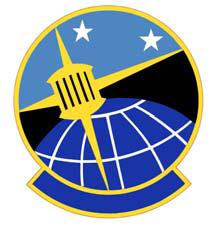
The 20th Operational Weather Squadron which provided forecasts for the Air Force and Army in Japan and South Korea, is now inactive following the transfer of its mission to Hickam Air Force Base, Hawaii on April 17, 2006.

The 96th Air Refueling Squadron was a unit of PACAF's 15th Wing at Joint Base Pearl Harbor–Hickam, Hawaii in partnership with the 203rd Air Refueling Squadron and 154th Maintenance Group of the Hawaii Air National Guard. It was inactivated on 3 September 2015.

The 57th Weather Reconnaissance Squadron is an inactive United States Air Force squadron. Its last assignment was with the 9th Weather Reconnaissance Wing at Hickam Air Force Base, Hawaii, where it was inactivated on 10 November 1969.

The 820th Bombardment Squadron is a former Army Air Forces unit, inactivated on 4 January 1946. The squadron was first activated during World War II as the 521st Bombardment Squadron. The squadron was soon engaged in the antisubmarine campaign off the Atlantic coast of the United States as the 16th Antisubmarine Squadron.
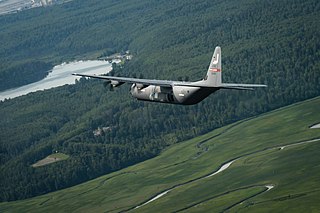
The 403rd Operations Group is the operational flying component of the United States Air Force Reserve 403rd Wing. It is stationed at Keesler Air Force Base, Mississippi.
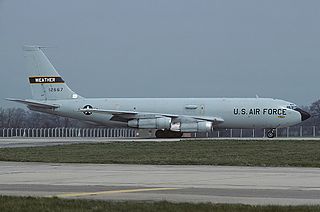
The 55th Space Weather Squadron is an inactive United States Air Force unit. It was last assigned to the 50th Operations Group at Schriever Air Force Base, Colorado, where it was inactivated on 16 July 2002.

The United States Air Force's 1st Combat Weather Squadron is a weather unit located at Fort Lewis, Washington. The squadron is connected to the 1st Air Support Operations Group and it provides support to units based at Joint Base Lewis–McChord, including I Corps, the Stryker brigades, an army aviation unit, the 16th Combat Aviation Brigade, and the 201st Expeditionary Military Intelligence Brigade.

The 7th Combat Weather Squadron, based out of Wiesbaden, Germany, was a United States Air Force squadron providing weather intelligence to United States Army Europe and Africa (USAREUR-AF) forces across the United States European Command (USEUCOM) and United States Africa Command (USAFRICOM) domains. It was inactivated in 2021 and replaced by the 13th Expeditionary Combat Weather Squadron.

